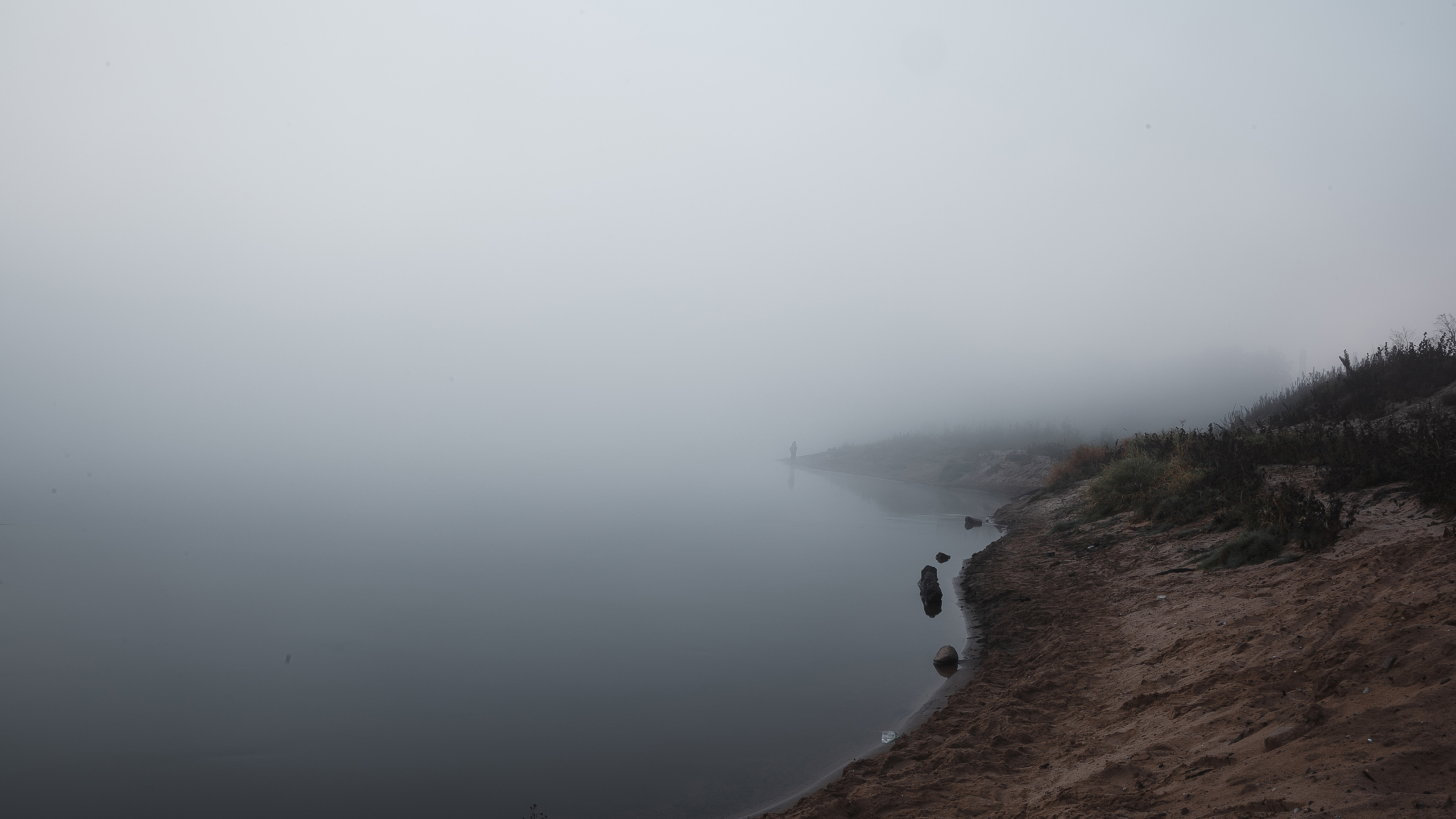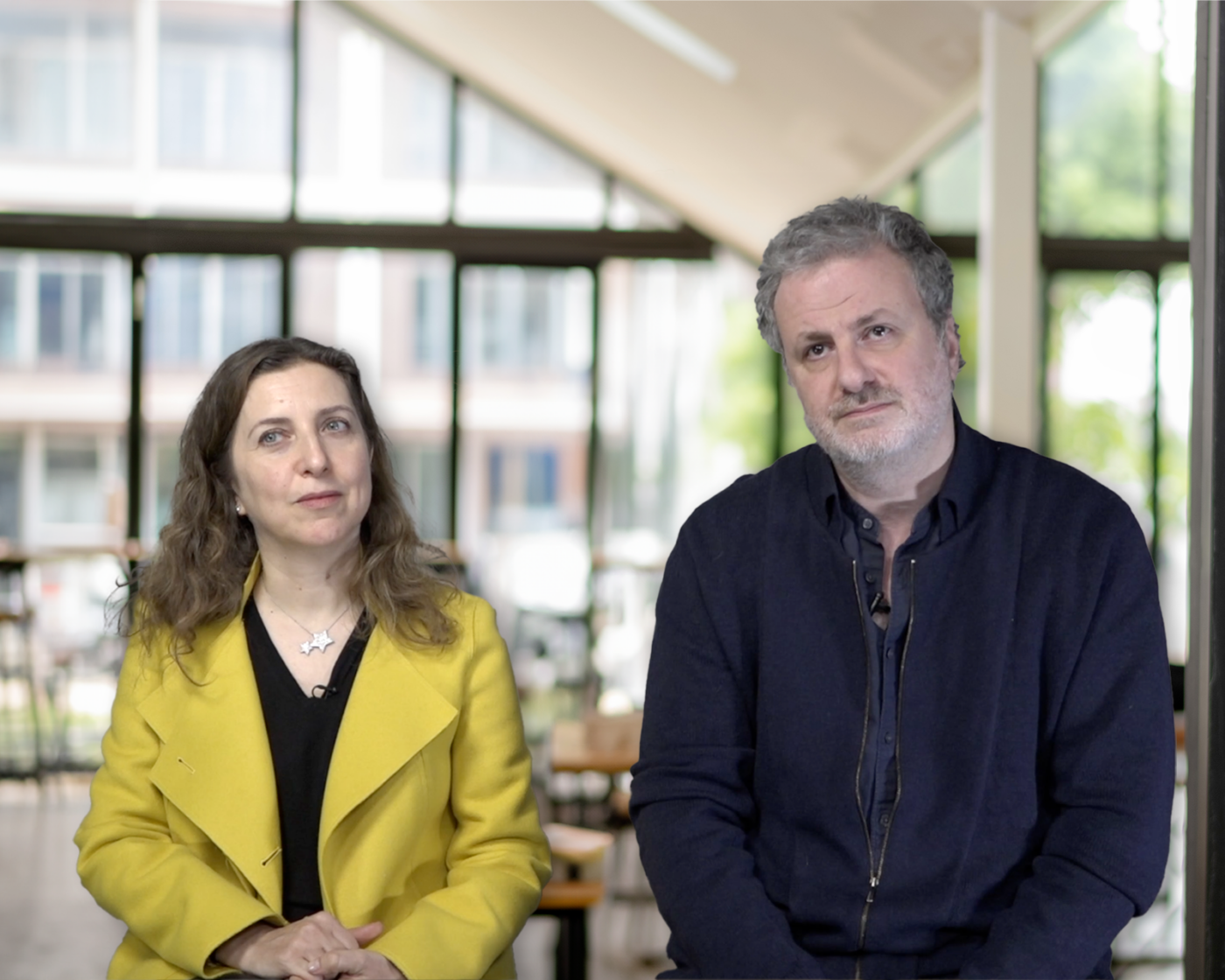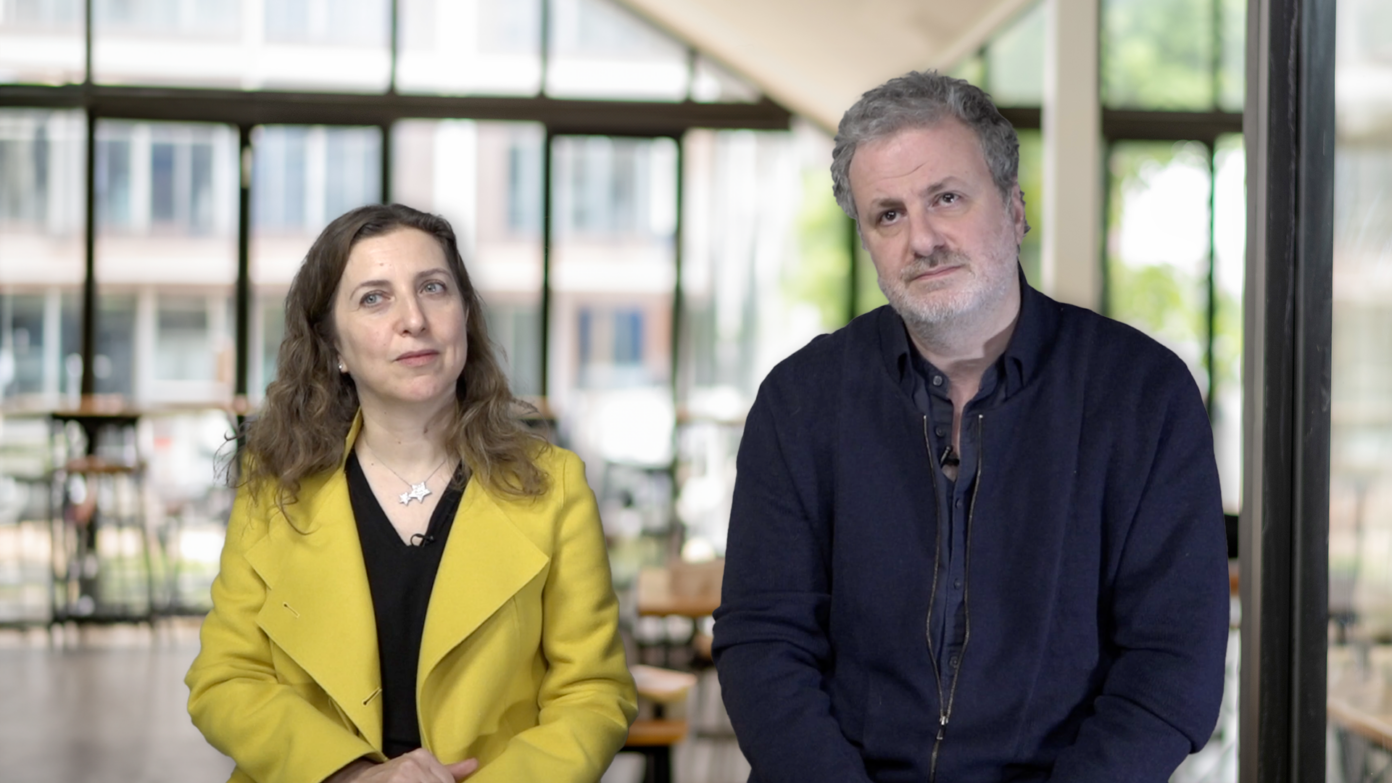Virginie Maris is an environmental philosopher. A Research Director at the CNRS, she works at the Centre d’Écologie Fonctionnelle et Évolutive in Montpellier, in close collaboration with ecologists and biologists.
In opposition to the movement challenging the concept of “nature” and its distinction from that of “culture,” you rehabilitate it by associating it with the wild. Why so?
When writing La Part sauvage du monde, Virginie Maris, La Part sauvage du monde (Paris: Le Seuil, “Anthropocène” collection, 2018). I wanted to respond to what could be described as the “death of nature” on two levels. First on a conceptual level, that I have drawn on, but that seems to me to be too severe toward the concept of nature, considered as irreducibly connected to domination and anthropocentrism. Here the critique is that “nature” serves as the basis for a great Cartesian dualism, with a strict and hierarchical separation between humans and nonhumans. The two most famous figures that advocate these ideas are Bruno Latour, according to whom only hybrids and interwoven worlds exist, made up of a diversity of natural, cultural, and manufactured entities; and Philippe Descola, who, with his “anthropology of nature,” does not criticize the concept of nature in itself, but rather shows to what extent it is an ethnocentric, Western, and non-universal construction, adopting variable and diverse forms depending on the culture.
A first “death of nature” would then be a symbolic death, caused by ferocious attacks on the concept. Another, less fertile and less stimulating in my opinion, comes from the first authors to put forward the concept of the Anthropocene in scientific literature. This criticism of nature emerged from the observation of the global influence of human activities on the planet, and more specifically on all of the spheres that make up our world: the geosphere, the biosphere, and the atmosphere. The excess weight of this Urbanocene and of the technosphere reveals a radical, massive, and global transformation that can be observed in the saturation of greenhouse gases, whose impact can be felt on a planetary scale through climate change. By declaring the omnipresence of human activity, numerous authors have to some extent signed the death warrant of everything that could have been considered as fundamentally autonomous, external, or different, placing the human in an even greater position of supremacy, as the main engineer of the planet.
In my opinion, the question is not to know whether we are witnessing the “death of nature,” even though this poses some valuable questions. Eradicating any reference to nature seems to me to be dangerous and not appropriate as we face the challenges of a general climatic and ecological crisis. I want to be clear that I am speaking from a Western cultural position, to my Western peers, as questions of imperialism and universalization should not be downplayed. But within this Western culture, the term “nature” entails a significant affect, linked to a capacity for self-creation and the emergence of the living, that I personally have no desire to leave behind.
Since the term “nature” is polysemic and open to a variety of interpretations, the definition that I choose to hold on to, imperfect as it might be, is closely linked to the notion of the wild. The various meanings attributed to nature include the idea of total nature, of normative nature, or of the normality of nature. I retain the meaning of nature that is defined in parallel to human intentionality. In this, it represents the part of the world not created by us that continues to stubbornly escape our designs, our projects, and our constructions. We are a part of this aspect of the world, and it is a part of us.
The “part sauvage du monde” (wild part of the world) covers spaces that carry no trace of human intention, but what about “renaturalized” or “rewilded” spaces?
This is a complex question as notions of rewilding and of ecological restoration have not yet been completely stabilized. This is equally true for ecological engineering, a notion that radicalizes a paradox that runs throughout the biology of conservation, including the least interventionist approaches of preservation and storing. The paradox here is to generate spontaneity. How can nature be intentionally produced? Faced with this question, two attitudes are possible: the first, that I do not adhere to, consists of considering that it is simply a vast hoax that only produces a simulacrum of nature. From this point of view, conservation would only be one form of environmental management, similar to agricultural production and mining operations.
I consider that it is possible to resolve this paradox by first examining intentions, and then temporality. As far as intentions go, let us use education as an analogy: it is obvious that one of the objectives of education is to allow children to become increasingly autonomous. However, they are subjected to almost constant coercion in the early years of their life, due to their vulnerability and certain physical limits. A significant number of educational gestures are thus aimed at helping children to gain autonomy in the future, even though they are produced in a situation of non-choice for children. Similarly, we could imagine acting on an environment, not to shape it according to our desires, but rather to provide it with the capacity to express its own evolving potential, its own ecological dynamics.
As for temporality—probably the most empirical way of testing our intentions—the question is to know whether in a project of managing an environment for conservation purposes—such as a project to renature or rewild—human intervention is carried out with the objective of ultimately becoming useless. This temporary character, this form of “helping hand” that does not make nature dependent on man’s actions, is in my opinion essential to carrying out a beautiful project of renaturing. This is the case, for example, when we reintroduce a few individuals in order to strengthen the population of birds of prey. A link in the trophic chain that had disappeared—often following anthropic persecutions elsewhere—human action here consists of nothing more than reintroduction. Once that is complete, the environment is free to follow its own trajectory, even if it is sometimes difficult to accept this act of retreat. In Camargue, for example, the reproduction of pink flamingoes was encouraged by the creation of artificial islands that allowed them to nest and repopulate the territory. Thus, people became used to seeing thousands of flamingoes, to such an extent that the bird has become the symbol of the region. But when it came time to stop maintaining the islands, letting nature take over, and, if I might say, stopping the “cultivation” of pink flamingoes, the fact that their reproduction once again became intermittent was very badly received by the local population and by certain conservationists.
There is then a scale for interventions. I think that actions that target the self-limitation of our human, individual, and collective freedom to transform environments escapes the paradox more easily, even if the simple fact of defining a space to create a protected area, the heart of a natural park for example, and to regulate its uses, already consists of an intervention in the surroundings. Take Canada for example, a place that I am familiar with as I worked there for a time. My encounter with the large national parks, the large wild spaces, the imagination of the forest, and the significant presence of the culture of the First Nations was most certainly responsible for my love of nature and my intellectual path. Nevertheless, it was also on the North American continent that a critical work of deconstruction of the wilderness and of untamed nature emerged. The writings of William M. Denevan William M. Denevan, “The Pristine Myth: The Landscape of the Americas in 1492,” Annals of the Association of American Geographers 82, no. 3 (September 1992): 369–85. in the 1990s in particular revealed a toxic fantasy, charged with a colonial and ethnocentric relationship, in particular with regard to the negation of autochthonous populations. Setting these areas aside led to the belief that they were wild untouched landscapes, when in reality, they were the living environment of pioneering civilizations.
You make a distinction between “dualism,” which you reject, and “separation,” which you seek to maintain. Does this mean that the limit between the two can be fertile?
Yes, this is how I manage to champion the idea that a world beyond man exists, one that deserves our attention, care, and respect. For this, I am supported by the writings of an ecofeminist author that I appreciate greatly, Val Plumwood, who demonstrates that the logic of dualism comes from two moments. A first, in which the characters of separation are exacerbated, in such a way as to differentiate categories in a rigid and hermetic manner, denying continuums and interdependences. Then a second moment, in which a hierarchy is established. The description of categories only functions by undermining one category in relation to another, very often according to definitions that could be described as privative. Thought is opposed to matter, nature, and culture. The ingredients of dualism are then rigid, hermetic, and hierarchical separations. This logic is initiated by modern thought, developed based on a number of oppositions, between human and nonhuman, man and woman, Europeans and autochthonous populations, civilized and wild, etc.
Plumwood reveals a true machine of domination organized around these oppositional pairs. To escape from these mechanisms of domination, it seems seductive then to sweep aside dualism in all its dimensions, differentiation included. By arguing that we are nature and that nature is us, men, women, Europeans, etc., cannot exist, only humans. But in doing this, there is a great risk of generating a form of absorption or assimilation that, as I see it, is not acceptable, in particular when domination is so heavily rooted in our institutions, languages, and identities. The danger is that we might become blind to true alterity, that we might find ourselves unable to recognize difference.
For me, the first step is then to become aware of this logic of dualism that allows the mechanisms of domination to be revealed. However, to respond to it by absorption, integration, and assimilation would make us unable to recognize alterity, to perceive the difference not as a hierarchy, but as a space of true recognition of the other. It seems to me that we should maintain boundaries, but ones that are fertile and porous rather than hermetic. The use of borders refers us to a terrible image of rejection, but borders are equally a place of encounter, a place for exchange where the multitude of identities is maintained through their differences. We could consider the border not as device of withdrawal, but rather as a mechanism for recognizing alterity.
Could we imagine escaping from a utilitarian vision of nature, which is responsible for the crisis that we currently face? What do you think for example of the notion of “ecosystem services,” which is now widely used but often accused of “commodifying” nature?
Ecosystem services gather all of the benefits that human beings and societies derive from the functioning of ecosystems. Following the Millennium Ecosystem Assessment report, we can identify three major categories: supply services, i.e. all of the planet’s renewable resources like agricultural, forestry, and fishing resources, etc.; regulatory services, a conceptual novelty, that concerns the functions of ecosystems that we benefit from without being aware of it, through the recycling of carbon, water, nutrients, but also predation, pollination, and urban green spaces; and finally, cultural services, the immaterial benefits of nature that we enjoy, like recreational, scientific, and educational services, attachment to place, cultural identification, and even spiritual and moral values. I do think that this third category absolutely cannot be described as a service, nor can it be reduced to the notion of benefit. It is a cultural or relational value that directly impacts human beings, their identities, interests, and well-being in a much more constructive fashion than simple benefits.
If we only consider the first two categories, we can criticize the notion of ecosystem services for using a kind of lexical mimicry of the world of economics. This term actually emerges from a desire to adopt the language of “decision-makers,” with a desire to make protecting nature a part of political agendas, that the ecologists of the last decade of the twentieth century assumed were heavily influenced by economic agendas. The risk of commodifying nature does not actually come from this approach in itself, but rather from the economic evaluation of ecosystem services. These evaluations can be quite telling, and even useful from an “educational” point of view. I am thinking in particular of the famous 1997 study, “The Value of the World’s Ecosystem Services and Natural Capital,” Robert Costanza et al., “The Value of the World’s Ecosystem Services and Natural Capital,” Nature 387 (1997): 253–60; Robert Costanza et al, “Changes in the Global Value of Ecosystem Services,” Global Environmental Change 26 (2014): 152–58. that revealed that the totality of ecosystem services that nature provides us with for free represents three times global GDP measured in dollars. This does raise certain questions, but a number of projects refuse to take them into account.
To illustrate the problems that this poses, take the example of the city of New York. In the beginning of the 1980s, the city conducted an evaluation of the economic value of conserving the drainage basin of the Hudson in the Catskill Mountains. It was shown that maintaining these mountains in good ecological and hydrological condition was much more profitable than investing in water treatment plants to maintain a high quality of water. But the same evaluation redone in 2008, in the context of a financial crisis, with a drop in the cost of labor and technological tools, showed on the contrary that it had become more profitable to build water treatment plants rather than investing in the preservation of ecosystems. These methodologies of cost assessment can then stimulate public debate and participate in decision-making, but they should not be the only element on which to base decisions, as they are debatable thanks to their temporal instability and dependence on context. These tools can be mobilized in certain specific cases, but they cannot capture the complexity of nature.
On a more fundamental level, the question of economic efficiency, part of an ideology of growth, appears to me to be at odds with the construction of a less toxic, less violent, and less extractivist relationship with nature. If we limit ourselves to considering nature as a pool of services and resources, we deprive ourselves of the means to discover systems of organization that allow sustainable relationships with the world. Looking at nature only through the prism of ecosystem services is the same as evaluating the value of a sentimental relationship based on a cost-benefit analysis: rent divided in half, avoided sessions with a psychiatrist, phone bills generated… This calculation indicates the costs and benefits of a relationship, but in no way represents the true value of what it means to us. What is more, adopting such an approach risks placing an accounting filter on one’s perception of a relationship, diminishing a partner’s ability to commit to it. Similarly, ecosystem services generate a flagrant undervaluation of the profound value of nature by basing their approach on circumstantial data, which is of little value when it comes to considering its worth. The commodification that you’re talking about exists more on a symbolic level, one that implies considering nature as nothing more than a simple resource. For me the major risk lies in our reduced capacity to be moved and to appreciate things for their intrinsic value. As with the example of a romantic relationship, it is possible that the deep, authentic, and disinterested values that connect us to the natural world will gradually fade to the point of disappearing.
Neither dualism nor ecosystem services reveal a constitutive approach of the human being. They are complex constructions and systems that drag us both individually and collectively into a deadly relationship with the living. Not being a misanthrope, I don’t believe that other human beings are genetically programmed to be terrible torturers, dominators, and predators. The issue today is then to revive our capacity for wonder, interaction, and concern, in the sense of care, rather than holding back or letting these things peter out. This plays out on a philosophical but also a political level, on the scale of the city, in the way we open cities up to nature and how we think about travel. It is up to each of us to rehabilitate this capacity that lies within us to care for others, and this includes nonhumans.
Order the book-magazine







